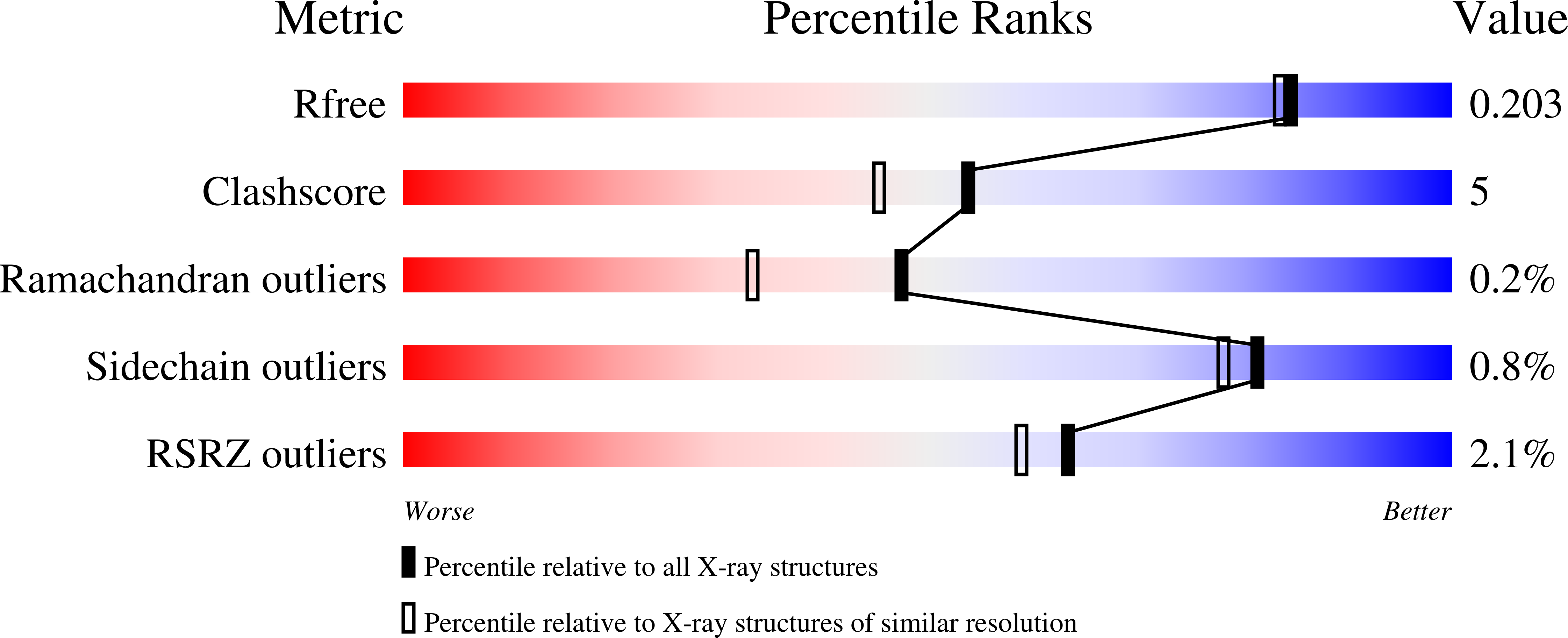Mechanistic Diversity in the RuBisCO Superfamily: The "Enolase" in the Methionine Salvage Pathway in Geobacillus kaustophilus.
Imker, H.J., Fedorov, A.A., Fedorov, E.V., Almo, S.C., Gerlt, J.A.(2007) Biochemistry 46: 4077-4089
- PubMed: 17352497
- DOI: https://doi.org/10.1021/bi7000483
- Primary Citation of Related Structures:
2OEJ, 2OEK, 2OEL, 2OEM - PubMed Abstract:
D-Ribulose 1,5-bisphosphate carboxylase/oxygenase (RuBisCO), the most abundant enzyme, is the paradigm member of the recently recognized mechanistically diverse RuBisCO superfamily. The RuBisCO reaction is initiated by abstraction of the proton from C3 of the d-ribulose 1,5-bisphosphate substrate by a carbamate oxygen of carboxylated Lys 201 (spinach enzyme). Heterofunctional homologues of RuBisCO found in species of Bacilli catalyze the tautomerization ("enolization") of 2,3-diketo-5-methylthiopentane 1-phosphate (DK-MTP 1-P) in the methionine salvage pathway in which 5-methylthio-d-ribose (MTR) derived from 5'-methylthioadenosine is converted to methionine [Ashida, H., Saito, Y., Kojima, C., Kobayashi, K., Ogasawara, N., and Yokota, A. (2003) A functional link between RuBisCO-like protein of Bacillus and photosynthetic RuBisCO, Science 302, 286-290]. The reaction catalyzed by this "enolase" is accomplished by abstraction of a proton from C1 of the DK-MTP 1-P substrate to form the tautomerized product, a conjugated enol. Because the RuBisCO- and "enolase"-catalyzed reactions differ in the regiochemistry of proton abstraction but are expected to share stabilization of an enolate anion intermediate by coordination to an active site Mg2+, we sought to establish structure-function relationships for the "enolase" reaction so that the structural basis for the functional diversity could be established. We determined the stereochemical course of the reaction catalyzed by the "enolases" from Bacillus subtilis and Geobacillus kaustophilus. Using stereospecifically deuterated samples of an alternate substrate derived from d-ribose (5-OH group instead of the 5-methylthio group in MTR) as well as of the natural DK-MTP 1-P substrate, we determined that the "enolase"-catalyzed reaction involves abstraction of the 1-proS proton. We also determined the structure of the activated "enolase" from G. kaustophilus (carboxylated on Lys 173) liganded with Mg2+ and 2,3-diketohexane 1-phosphate, a stable alternate substrate. The stereospecificity of proton abstraction restricts the location of the general base to the N-terminal alpha+beta domain instead of the C-terminal (beta/alpha)8-barrel domain that contains the carboxylated Lys 173. Lys 98 in the N-terminal domain, conserved in all "enolases", is positioned to abstract the 1-proS proton. Consistent with this proposed function, the K98A mutant of the G. kaustophilus "enolase" is unable to catalyze the "enolase" reaction. Thus, we conclude that this functionally divergent member of the RuBisCO superfamily uses the same structural strategy as RuBisCO for stabilizing the enolate anion intermediate, i.e., coordination to an essential Mg2+, but the proton abstraction is catalyzed by a different general base.
Organizational Affiliation:
Departments of Biochemistry and Chemistry, University of Illinois, 600 South Mathews Avenue, Urbana, Illinois 61801, USA.
















